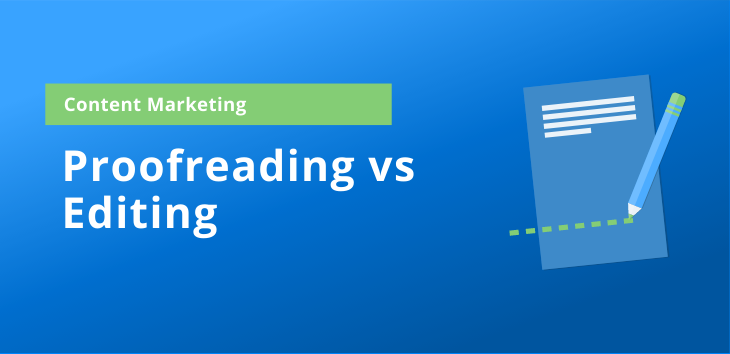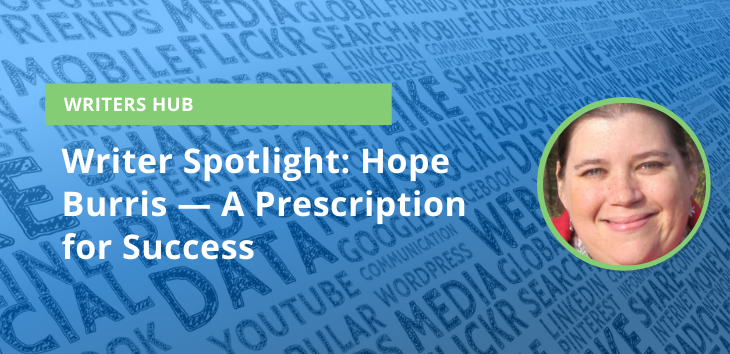Writing is a continual process of correcting and revising your work until it’s clear, logical and organized. A well-written article or blog post may look effortless, but a lot happens behind-the-scenes to get it to this point. Understanding the tasks involved in proofreading vs editing can strengthen your own writing abilities.
Differences Between Proofreading vs Editing
When you write a book, essay or product description, it needs to be as smooth as possible, so readers can focus on your message. Editing and proofreading are essential in achieving your best work.
- Editors aim to improve writing quality with an in-depth review of structure and language. This process can require substantial writing and rewriting. Well-edited documents flow smoothly for maximum impact on the reader.
- Proofreaders make sure the final product isn’t marred by surface errors like typos and spelling. A minor spelling mistake doesn’t change the meaning of your work, but can distract readers and affect your credibility. Proofreading comes after editing is complete and should require only minor corrections.
The two tasks can overlap. Both editing and proofreading can catch spelling and punctuation errors, for example.

What’s Editing?
You’ve researched your article, created an outline, and put together a first draft. Now you’re ready to edit your document. For best results, editing is done in phases to target different levels of detail.
The three main types of editing are set out below, although people may use different terms to describe them.
Developmental Editing
The first step of editing is structural. Developmental editing looks at the overall organization of ideas in your document. You may have to move sections around, so the article is more logical to read, or write additional paragraphs to add context for clarity.
In some cases, an editor may feel an entire section is off-topic and delete it. It’s never fun to see hard work vanish in an instant, but tough edits may be required to make your writing concise.

If you’re editing your own work, you may want to create a post-draft outline. This visual representation helps you look at the big picture to see if your article is organized in a way that makes sense.
Developmental editing is also called a manuscript critique, structural editing or content editing.
Substantive Editing
A substantive edit concentrates on flow. Editors assess the transitions between sections and paragraphs, and the effectiveness of the writing. You might need to:
- Vary sentence length to help with pacing
- Eliminate redundancies
- Get rid of fluff and clichés
- Smooth over awkward phrasing
- Rework sections for consistent and appropriate tone
Substantive editing is also referred to as stylistic or line editing.
Copyediting
Copyediting is even more detail-focused than substantive editing. During this stage, you’re reading the manuscript line by line and digging into sentence structure and the mechanics of the English language.
A copy editor looks for style and grammar issues such as:
- Subject-verb agreement
- Active and passive voice
- Capitalization
- Word choice (clarity and appropriateness)
- Variations between American, British and Canadian English
- Adherence to style guides
This level of editing can also include fact-checking.
What’s Proofreading?
Once editing is complete and all stylistic issues are addressed, it’s time for proofreading. This is the final piece of the editing puzzle. Think of it as the quality assurance check before you release an article or book into the world. At this point, you shouldn’t be making significant revisions — if you are, you’re still editing.
Proofreaders need an eagle eye to pick out the extra space after a period or a missing Oxford comma. Spellcheckers can catch some grammar errors, but you should always review the text yourself.
A Few Proofreading Tips
At the proofreading stage, you’re ensuring every word is right and that you’ve followed appropriate style guides. Check for:
- Typos
- Spelling mistakes
- Spacing errors
- Punctuation mistakes
- Repeated or missing words
- Inconsistencies in formatting titles and lists
Many little errors can crop up, so a systematic approach to correcting mistakes is required. Consider proofreading once to correct spelling and punctuation, for example, and then again for formatting. You can also make a proofreading checklist. Are your headers capitalized consistently? Is there a colon before every bulleted list?

Applying Proofreading and Editing Skills to Tasks
The editing process usually looks different for an author writing a book compared to a freelancer working on short articles at home.
- Authors with a publishing house may have a large support team, with various individuals managing structural edits, copyediting and proofreading
- A small publication may only have the resources to assign one editor to a project
- Freelancers working directly with clients may not have the services of a team of proofreaders and editors
Find a Proofreading and Editing Routine That Works For You
All writers should learn the difference between editing and proofreading and be as detail-oriented as possible. If you’re not comfortable with your skills, you can choose to use an editing service.
Either way, it’s important for freelancers to write high quality, error-free content that’s ready to publish. Since you’ve made it to the end of this article, you now know this means:
- Looking at the overall organization and structure of your article
- Focusing on the flow and transitions between paragraphs
- Examining the mechanics of each sentence and word
- Proofreading
Depending on your comfort level and the complexity of the project, you might combine steps instead of tackling each separately. But if you do try to edit and proof simultaneously, make sure you don’t introduce new errors. One final proofread is always recommended before you hit that submit button.
Write With Crowd Content
Whether you’re an experienced writer or just launching your freelancing career, put your skills to work with Crowd Content. Our clients are hiring writers of all levels to create articles, blog posts, product descriptions, landing pages, and white papers. Grow your career with the support of our team, and get started with Crowd Content today.




